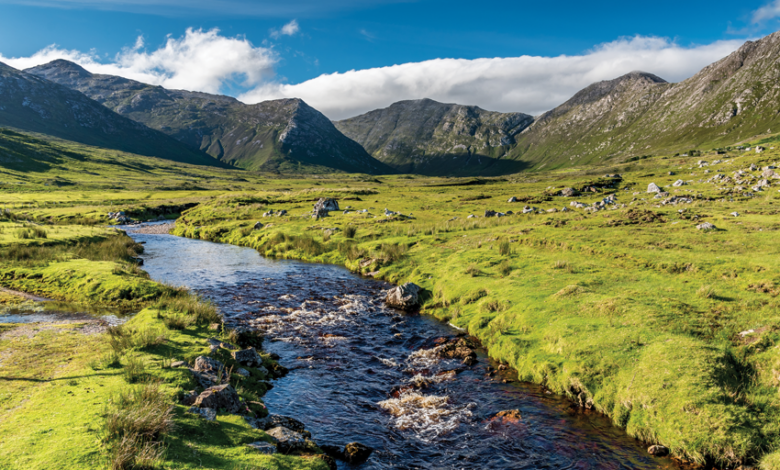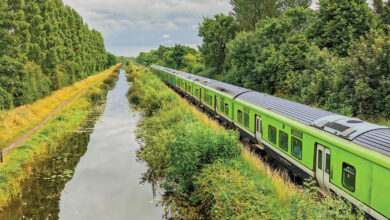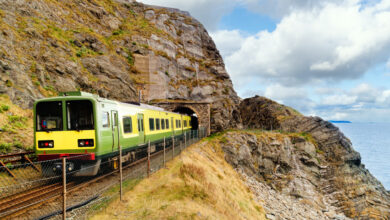Protecting Ireland’s water resources

Mary Kelly-Quinn, Professor of Applied Freshwater Ecology at the School of Biology and Environmental Science at University College Dublin (UCD), outlines the scale and consequences of the water quality crisis in Ireland’s freshwater sources.
Environmental Science at University College Dublin (UCD), outlines the scale and consequences of the water quality crisis in Ireland’s freshwater sources.
Kelly-Quinn begins by outlining that water quality in Ireland is continuing to decline. “As the EPA highlights, it is going in the wrong direction. That is affecting everything from clean drinking water, through to recreation, sense of place, tourism, and economic development. We have made some improvement, but declines are outpacing improvements. Therefore, the current efforts, are not efficient to stem the decline,” she says, before emphasising: “Our water resources will not benefit from glass half full perspectives.”
Describing Ireland’s freshwater systems as living in a “multi-stressor environment,” Kelly-Quinn explains how “agriculture is the dominant source of pressure followed by hydromorphology, discharges in urban wastewater, and inputs from forestry operations”.
“Ireland’s freshwaters are receiving cocktails of multiple pollutants delivered along multiple pathways, often from several sources, requiring the targeting of the right measures in the right places,” she says.
“We are dealing with the runoff of nutrients, excess fine sediment, pesticides from agriculture and farmyards, habitat damage from drainage, organic pollution from poorly treated wastewater, and storm water overflows. “We also have runoff from nutrients and excess sediment from forestry operations. Excess sediment has immediate and long-term ecological impacts but, in my opinion, it is the low hanging fruit, and requires priority mitigation.”
Wastewater and pollution
Nutrient concentrations, Kelly-Quinn states, are too high and the trends are going in the wrong direction. “30 per cent of river sites have high phosphorus concentrations and 78 per cent of sites have increasing concentrations. One-third of lakes have high phosphorus concentrations and 10 per cent of lakes have increasing phosphorus concentrations.”
“Ireland’s freshwaters are receiving cocktails of multiple pollutants.”
Mary Kelly-Quinn, University College Dublin
Kelly-Quinn adds that: “Nitrate concentrations are now increasing in nearly half of our river and groundwater sites that have been monitored. On top of that, pesticides have been detected in drinking water supplies. A report produced in 2022 shows that 31 supplies failed to meet our pesticide standards in 2021.”
The UCD professor further outlines the “challenging problem” of wastewater treatment. “Twelve large urban areas did not meet the EU treatment standards in 2021. Thirty-two towns and villages discharge raw sewage into our seas and rivers every day. This is unacceptable in the 21st century in a developed country,” Kelly-Quinn emphasises.
“Wastewater discharges are a significant pollution pressure in 208 water bodies. Thirty-eight priority areas require improvements to protect rivers, lakes, estuaries, and coastal waters.” The Department of Housing, Local Government, and Heritage says that work is to be completed on 11 of these by 2024, although Kelly-Quinn states that she hopes that this work “will happen a little bit faster”.
Small streams and headwaters
Kelly-Quinn has recently completed research on Ireland’s small streams and headwaters. Said water sources make up around 75 per cent of Ireland’s river network, around 75,000km of river channel. These, Kelly-Quinn explains, “are the most vulnerable part of the river network because of a high land-water contact”.
Kelly-Quinn further contextualises that, because of their narrow channel width and low water volume, these freshwater sources are easily impacted by pollution. “Equally, they are extremely important in terms of biodiversity providing spawning areas for fish and almost one-third of the invertebrate life that you find in a river catchment can be unique to the headwaters and found nowhere else.”
Against this backdrop, Kelly-Quinn explains how, in her research, she has examined 199 streams over an 11-year period. “113 of these stream sites have elevated nutrients, half with exceedances in two nutrients, and some with exceedances in three nutrients. Without a doubt, there are greater resources needed to be focused on headwaters.”
She further outlines the scale of consequences of these elevated nutrient levels in the biodiversity crisis, as the number of Irish pristine water sites has declined from a number of more than 500 in the 1980s, to only 32 in 2023. Although welcoming the classification of these water sites as high-status objective catchments, Kelly-Quinn laments the relatively slow pace of progress made thus far.
“Only 43 per cent of these sites are achieving high status. We need to give high priority to the protection of these sites and also to expansion in the number of these sites. They have a high level of strategic importance in terms of ecological recovery and restoration of ecological health because they contain a complement of flora and fauna that is required to repopulate areas which are recovering from pollution.”
Need for action
Concluding, Kelly-Quinn poses a difficult rhetorical question which she hopes decision-makers will ponder: “Are we doing enough, fast enough, and at a broad enough scale to achieve the outcomes we require?”
She further states her hope for a “higher level of ambition” in the revised River Basin Management Plan, adding that “deteriorating water quality needs to be taken more seriously at policy level”.
Kelly-Quinn states that decisions need to be taken with an understanding that there are “three interlinked crises: water quality, climate, and biodiversity loss”. “The solutions to these crises,” she concludes, “will be bespoke, and they should be co-developed with landowners and other stakeholders. Communication of the problems needs to reach a wider audience.
“There are lots of good projects and work being done across the country, but not at a scale that is good enough or fast enough, so we need an effective recovery plan with coordinated actions and resources to bend the curve of declining water quality and biodiversity loss.”





